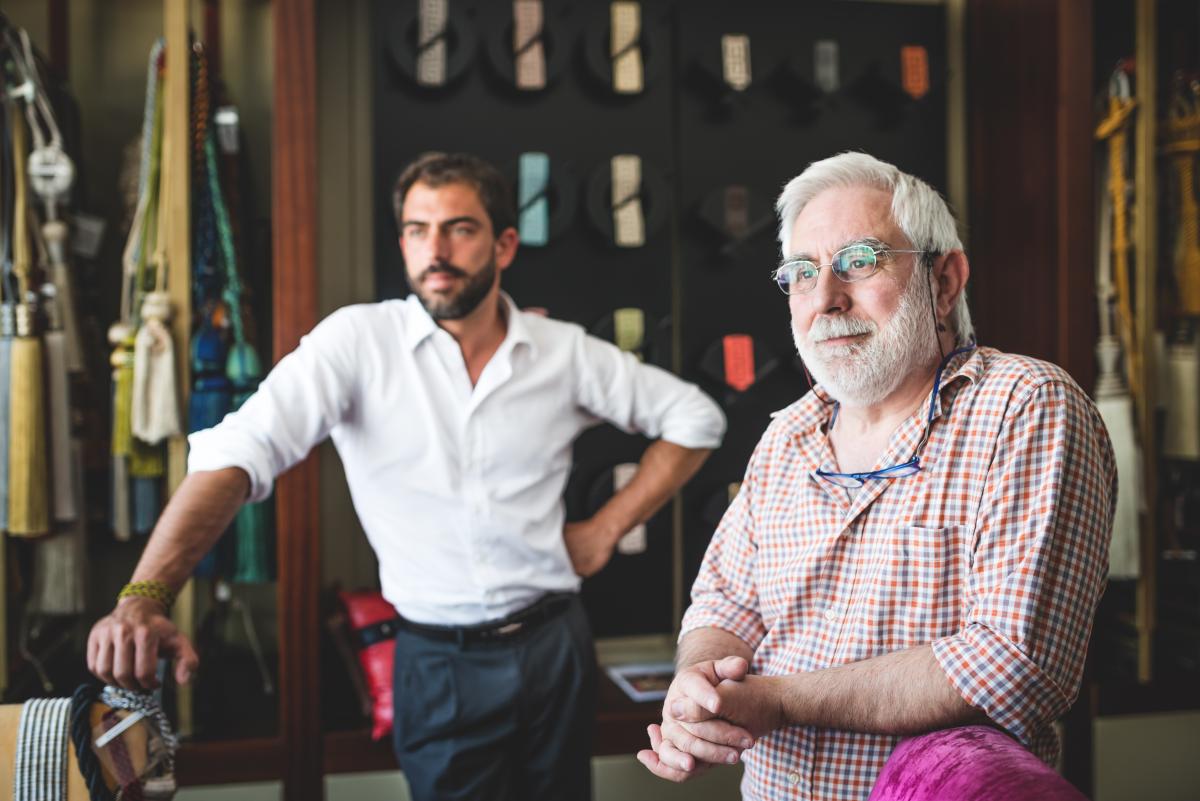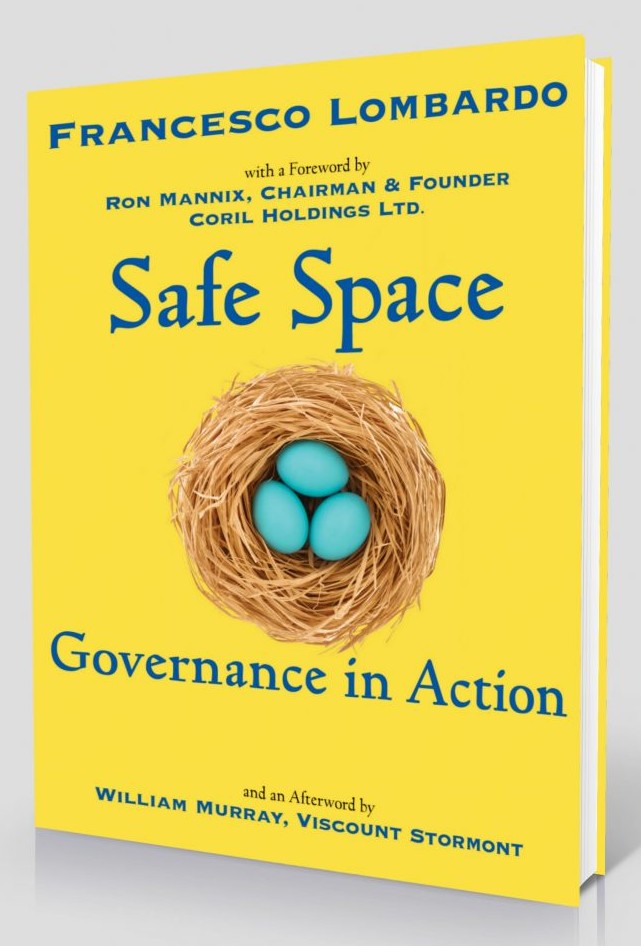Which behavioural 'gig' do you play in your family business?

Family members behave with each other as one of six ‘gigs’ which can severely impact their family business, says adviser and author Francesco Lombardo.
The Family Enterprise Adviser, founder of Veritage and podcaster said he has witnessed the six dynamics emerge while working with some of the world’s most successful and affluent families over more than 20 years.
Lombardo brings his perspective to the identification and management of behavioural risk through the development of “Safe Space” in his fifth book, Safe Space: Governance in Action. He explores how emotional and psychological safety is critical to maintaining healthy family dynamics through the often difficult and inevitable processes of succession planning and wealth transition.
In this extract, Lombardo summarises the beliefs, the costs and the impacts of each of the six gigs.
 The “Gigs” we play
The “Gigs” we play
The “gigs” we play are our automatic trigger response and default behaviour that we engage in when under stress or feeling vulnerable to reassure or convince ourselves and give others the illusion of our being in control and operating out of our Safe Space. These responses are a default mechanism created in the past, as a result of some old emotional or psychological wound, and which at the time of their origin, were designed to keep us safe and protected from harm—our defence mechanisms. We all play a variety of “gigs” throughout our lives. We may have a primary “gig,” which would be based on what is likely our most significant and formative of childhood wounds.
“Gigs” are the unconscious, unhelpful behaviours that tend to get in the way of our developing and experiencing the real, psychological Safe Space that we all want and desire. Reacting out of our own “gig” both creates and actually perpetuates the exact opposite result; it makes the space we are in unsafe for us, as well as one in which other people don’t feel safe sharing what’s going on for them.
This is a negative cycle of communication and interaction that will continue to repeat itself until the cycle of behaviour is consciously broken so that a new, healthier pattern of interaction can be put in its place. You will learn how to break the negative cycle of reacting out of the “gigs” we all play and replace that negative, poor, bad, dysfunctional behaviour with something better that actually serves to create the Safe Space you desire, with behaviour that similarly works to consistently nurture and sustain the development of Safe Space.
 Less than ideal events occur in everyone’s life. As a result of these events, perhaps a single event in particular, we attach some subjective meaning to what happened and we draw some sort of conclusion about ourselves. The subjective meaning that we attribute to the event/s becomes the framework of our most fundamental and unexamined beliefs.
Less than ideal events occur in everyone’s life. As a result of these events, perhaps a single event in particular, we attach some subjective meaning to what happened and we draw some sort of conclusion about ourselves. The subjective meaning that we attribute to the event/s becomes the framework of our most fundamental and unexamined beliefs.
Behavioural risk is the behaviour we engage in reflexively, or subconsciously. This is our automatic response when some event in the present triggers a memory or an experience. What triggers the behaviour for us can occur in a variety of ways.
Our automatic response to the trigger is what I refer to as one’s “gig.” Our “gig” is how all of us display and manifest our behavioural risk. The key to breaking the dynamic is twofold. Step one is to determine what the triggers are, and step two is for us to choose a different behaviour, or a different way of responding, one that is based on our guiding principles.

For most of us, our troubles start with our beliefs. Our beliefs lead to the development of our “gigs” that, in turn, we learn to hide behind the mask we wear, as a defence mechanism for ourselves, and lead us to try and convince others that we are operating out of a Safe Space—a place of confidence, competence, congruence, and authenticity.
The mask we wear helps perpetuate the belief we have and continues to allow us to justify to ourselves the “gigs” we play. In reality, the mask we wear is part of the lie we tell ourselves to maintain our own illusion of safety. In continuing to believe our unexamined beliefs and acting out the “gigs” we are most comfortable and familiar with, we stay stuck in the spiral of risky behaviour, driven more by our defences than by our potential.
What has to happen before we can find real Safe Space and give up our defences is this: we have to be open to re-examining and challenging the validity of these long-held, and hitherto fore unexamined childhood beliefs. This is both exceedingly challenging and yet rewarding work, which very few of us can successfully achieve alone. We also have to be willing to identify and take responsibility for our “gigs”—our behaviours—and the impact they have, first on ourselves, then on our relationships, and finally with our material and financial wealth.
 In re-examining and challenging the validity of our beliefs and identifying and owning our “gigs,” we have begun the process of dissolving the layers of the mask/s we wear. In other words, we begin to stop telling the lie/s that perpetuate the belief/s and justify the “gigs.” This requires a great deal of courage and the willingness to make ourselves vulnerable because we are letting go of our psychological and emotional behavioural defences.
In re-examining and challenging the validity of our beliefs and identifying and owning our “gigs,” we have begun the process of dissolving the layers of the mask/s we wear. In other words, we begin to stop telling the lie/s that perpetuate the belief/s and justify the “gigs.” This requires a great deal of courage and the willingness to make ourselves vulnerable because we are letting go of our psychological and emotional behavioural defences.
In my own journey and through having the privilege of witnessing some stages of the journeys of those I serve, wherever I have been the Sherpa and guide, I have come to understand and appreciate that we cannot find and maintain the Safe Space we seek when we are still wearing a mask and performing our “gigs.” We have to find the courage and be willing to be sufficiently vulnerable to start to remove the layers of the mask/s we wear. Only when we have thinned the mask to a near-transparent layer will we begin to facilitate the necessary emotional and psychological environment that is a prerequisite for the creation of the Safe Space we truly seek.
What I have observed and experienced in my business—family consulting and coaching practice over more than 20 years—is that individuals will perform their “gigs” in one of the six following ways. After all, there are only so many ways we can behave. Below, I list the most common ways I have witnessed individuals within business families behaving towards one another, along with the underlying belief that drives the “gig,” and the perceived cost of the behaviour and its impact on relationships within the family system.
Above all else, for better or worse, the beliefs and behaviours of the Human Capital (the individual/s) is the most significant variable within the system and will have the greatest impact on the Social Capital (the relationships within the system) and the Financial Capital (wealth within the system) with respect to the quality of decision making and communication, both within the family business and beyond, and consequently, the degree of success they ultimately realise with the management of their own material and financial assets.
The Avoider:
• This is the individual who avoids difficult situations, speaking up, and making decisions. They continually put things off, and often make the excuse that they need more information. In being the avoider, they may receive or obtain affection, attention, and sympathy/latitude from others.
• Belief: I don’t trust myself to make the right decision.
• Cost of behaviour: Take too long to make decisions, poor time-management, overwhelmed.
• Impact: Mistrust others.
The People Pleaser:
• This is the individual who seeks to please everybody they encounter, no matter the cost. They will give away the best of themselves for a morsel of affection, attention, or acknowledgement.
• Belief: I am not valuable and don’t belong here.
• Cost of Behaviour: Have poor boundaries and maintain a façade to be liked, loved, and accepted.
• Impact: Not trusted by others.
The Rescuer:
• This is the individual who has an overwhelming need to save others—to be everything, to everybody. They feel they always have to be the hero and this gives them attention, affection, and reverence of others.
• Belief: By rescuing others, they will love me.
• Cost of Behaviour: They create dependent and co-dependant relationships.
• Impact: Others aren’t given the opportunity to grow or take responsibility or be accountable for their behaviours and actions.
The Manipulator:
• This is the individual who has a need to appear important and receives the attention, affection, and reverence of others through being deceitful and withholding information and/or not being forthcoming with the entire truth.
• Belief: Others are more important or powerful than me.
• Cost of Behaviour: Ultimately, they feel isolated and as if they do not belong or are not really part of the team.
• Impact: Others do not trust them.
The Victim:
• This is the individual who feels they have been disadvantaged and they are always the victim of an injustice, always the recipient of the short end of the stick.
• Belief: The situation I am in is always someone else’s fault.
• Cost of Behaviour: Isolation and a lack of respect from others. They never take responsibility or accountability for the situation they have created for themselves.
• Impact: Others will avoid them and not want to engage.
The “Right Fighter”
• This is the individual who always feels they must have the last word and will fight to achieve it.
• Belief: I am right; I know better; I know what’s best.
• Cost of Behaviour: Alienate others, push people away.
• Impact: Others don’t want to engage and they’re seen as argumentative.
The common factor with all these categories of “gigs” is this: fundamentally the individual does not feel safe or have trust in themselves to be authentic or vulnerable. As a consequence, they perform their “gigs” as a way to cope and get their needs met in ultimately unhealthy ways.
These behaviours lead to co-dependent relationships with others, which establish a platform for communication and interaction where all participants default to perform their own respective “gigs,” and together, collectively, continually feed the cycle of pretence that undermines the development of an authentic Safe Space for everybody.
Our beliefs feed our “gigs,” which are hidden behind the masks we wear and the lies we tell ourselves to protect and perpetuate the “gigs,” which in turn validates our unexamined beliefs. This dysfunctional cycle keeps us locked into a place where we seek a false place of safety that resides outside of our own selves.
In my experience, on my own journey towards greater authenticity, and through the work I have undertaken in the service of others through my professional practice, in order to break this ultimately destructive cycle, one must have the courage to identify and ultimately dissolve the masks we wear. The irony of this journey towards an authentic Safe Space is that the masks we wear prevent us from getting what we actually want more of in our own life and in our most intimate of relationships—an authentic Safe Space.







